A House of Simultaneous Arrivals
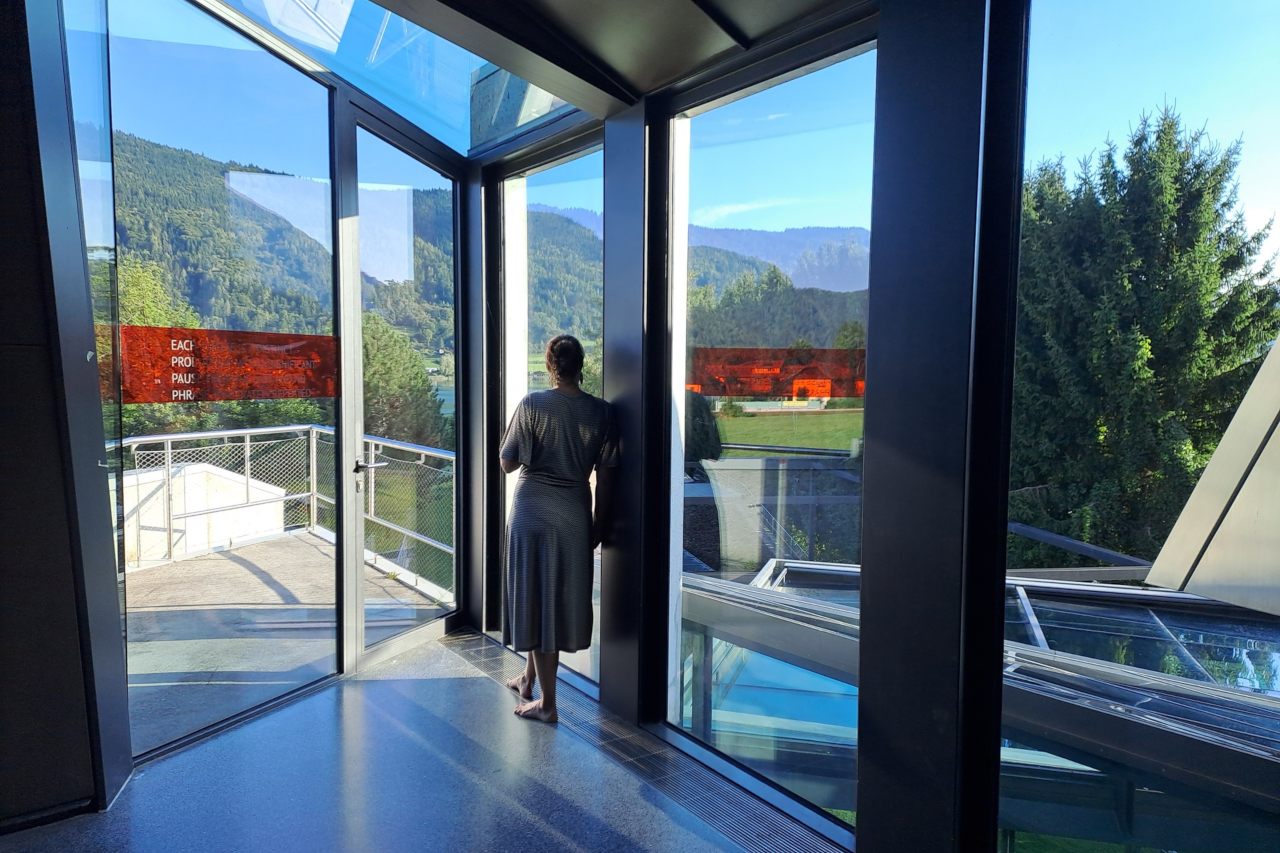
In the second of the two project exhibitions, we returned to the Domenig Steinhaus in Carinthia, one of the places that we had visited for reflection at the end of simularr’s second interval. The presence of the building starkly contrasts with the almost ‘black cube’ we found at the Neue Galerie. It reminded us that one of the principle tenets of our research was the interference of physical/architectural spaces with our co-laboration practices.
Marking almost the end of the project, except for the book publication, it felt appropriate to call the exhibition A House of Simultaneous Arrivals. We were given free rein to spread out across the building, and there is certainly more than one way of traversing the different positions of the ten participating artists-researchers. For this text, we propose we begin in the garden, a natural direction of attraction, since Günther Domenig originally wanted to build his house directly at the water front of Lake Ossiach.
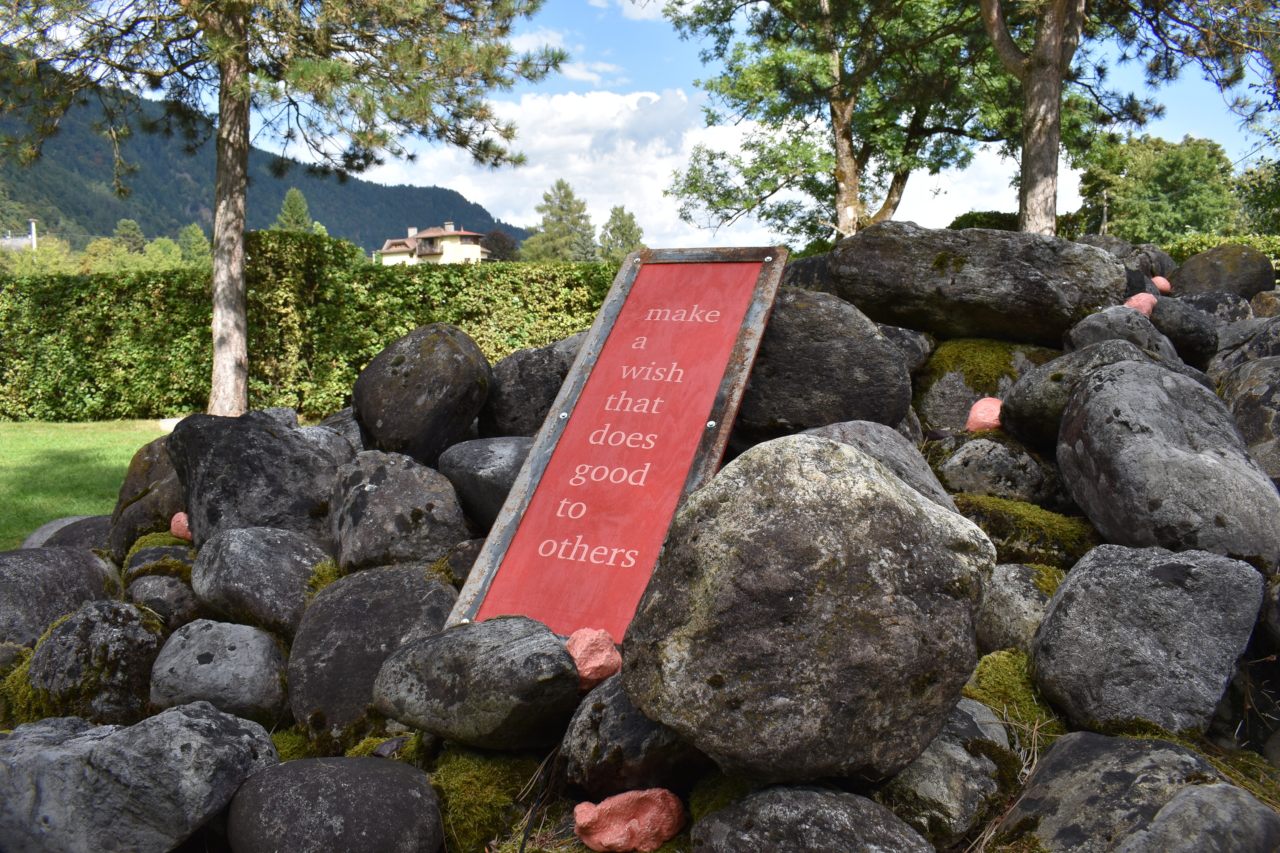
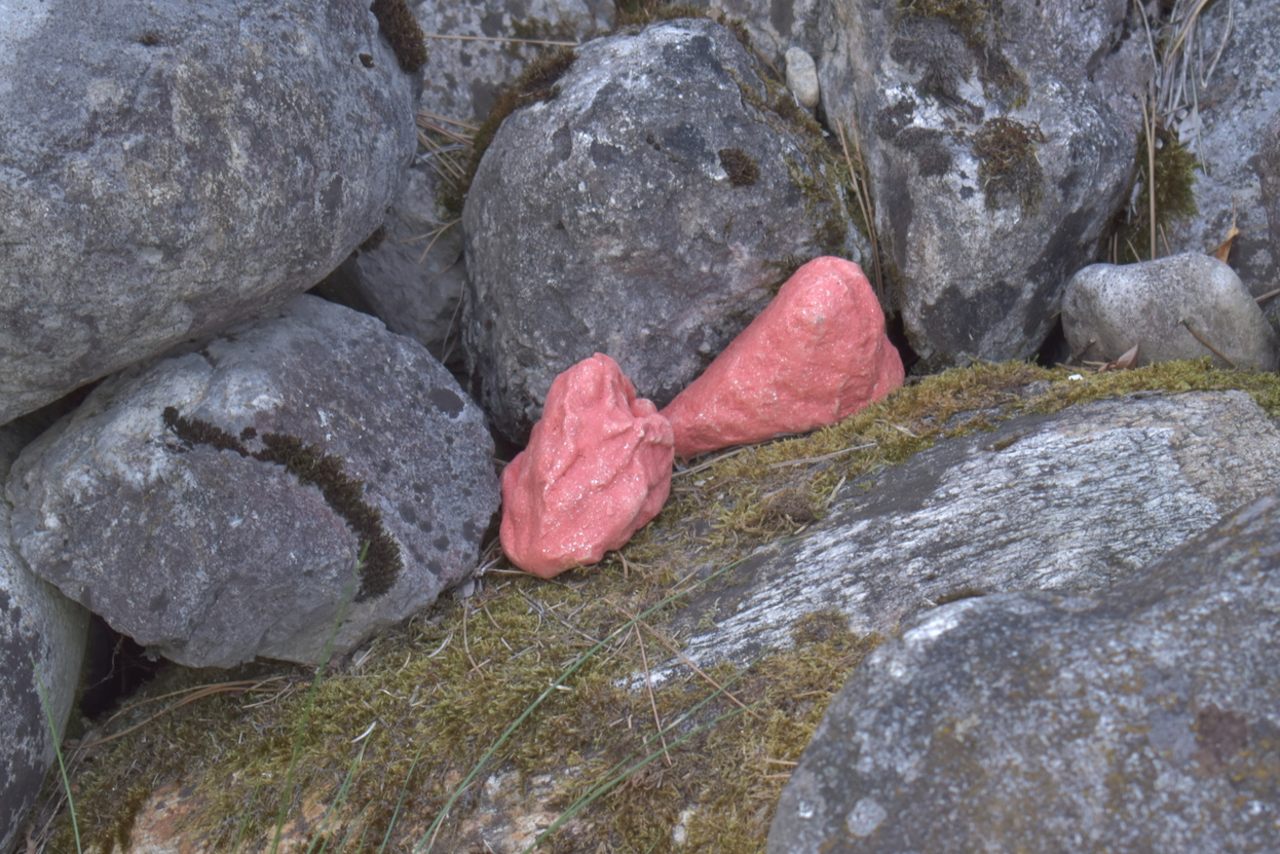

Nayarí Castillo’s installation The Empathetic Wishing Tumulus repurposes the pile of rocks we find in the garden. Most visible is the red signal that asks one to ‘make a wish that does good to others’, and perhaps at second sight one notices a number of red ‘rocks’ placed among the original rocks. The work goes back to the second interval phase on an improvised rooftop ceramic workshop at Palazzo Russo in San Cesario di Lecce, where the textures of the palazzo were translated into ceramic rocks. Most audible are the voices heard around the pile, uttering wishes contributed by various participants. The voices originate not only from the pile of rock on the lawn, but also from the top of the adjacent and larger pile of black stones, where a transducer is visibly attached to a metal object.
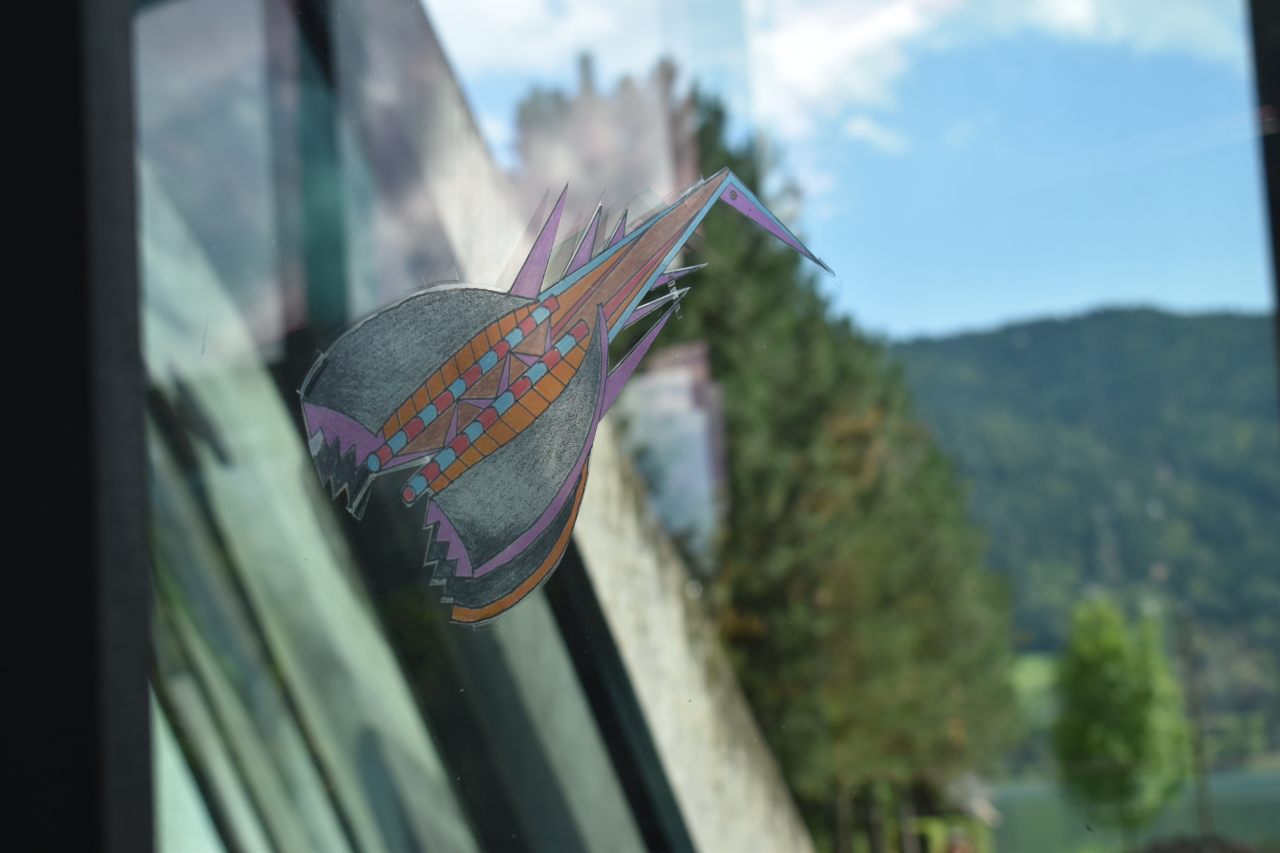
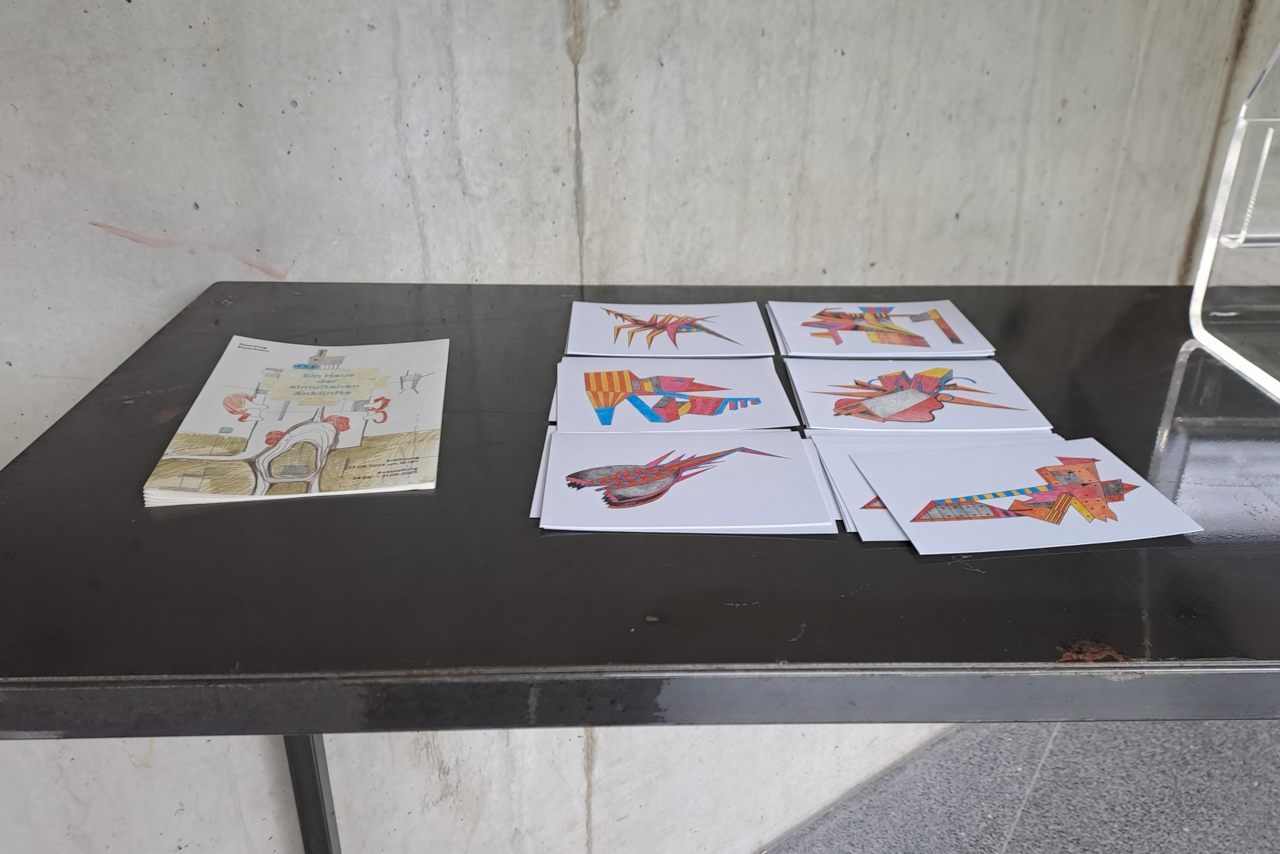
As we approach the building from the garden, we can already see some of Günther Domenig’s amusing animals, a series of drawings on transparent paper by Franziska Hederer, installed across the window surfaces of the building’s central cubicle. The animals merge not only with the landscape when one looks through them, but also with the house itself, transforming it in scale. They take on the contours of the construction, the figure, the light and shadow casts, and the shading of surfaces, giving the house sculpture a touch of liveliness paired with a subtle smile. The drawings can also be collected as postcards placed in the reading room.
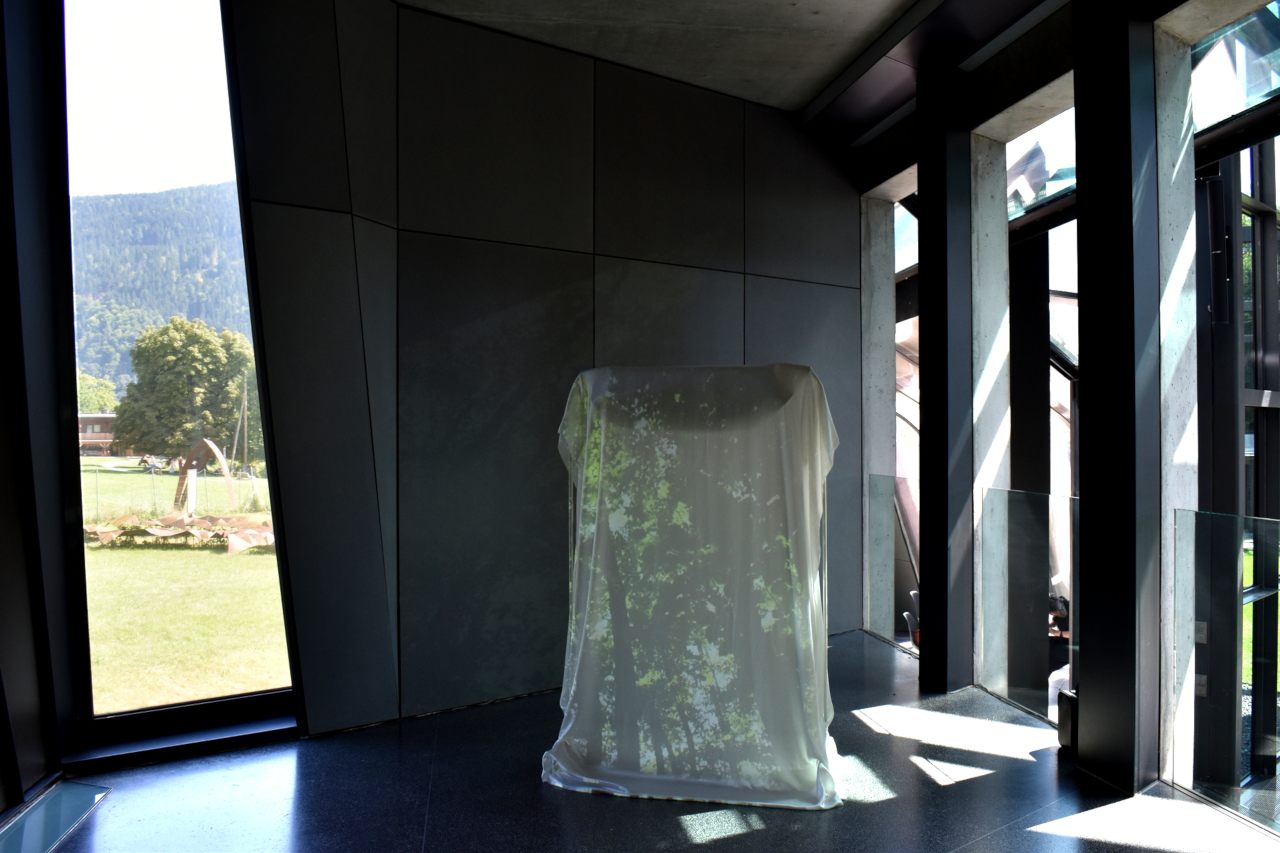
From the cubicle, one can hear multiple sounds, perhaps most prominently singing voices. Trying to locate their origin, one finds in the ‘East wing’ of the ground floor the audio-video installation by Andrea Bakketun, titled Inhale to fire, exhale to melt, inhale to amplify, exhale to offer. In this work, air, water, earth, fire, and space serve as portals in unfamiliar settings, linking the body to the world. The video and sound footage was captured during the intensive weeks of the third interval at Hoke Werkhaus, East of Klagenfurt. The experience there inspired new processes in Andrea’s work, exploring voice, breathing, space, and elements like underwater sounds and unique natural features.

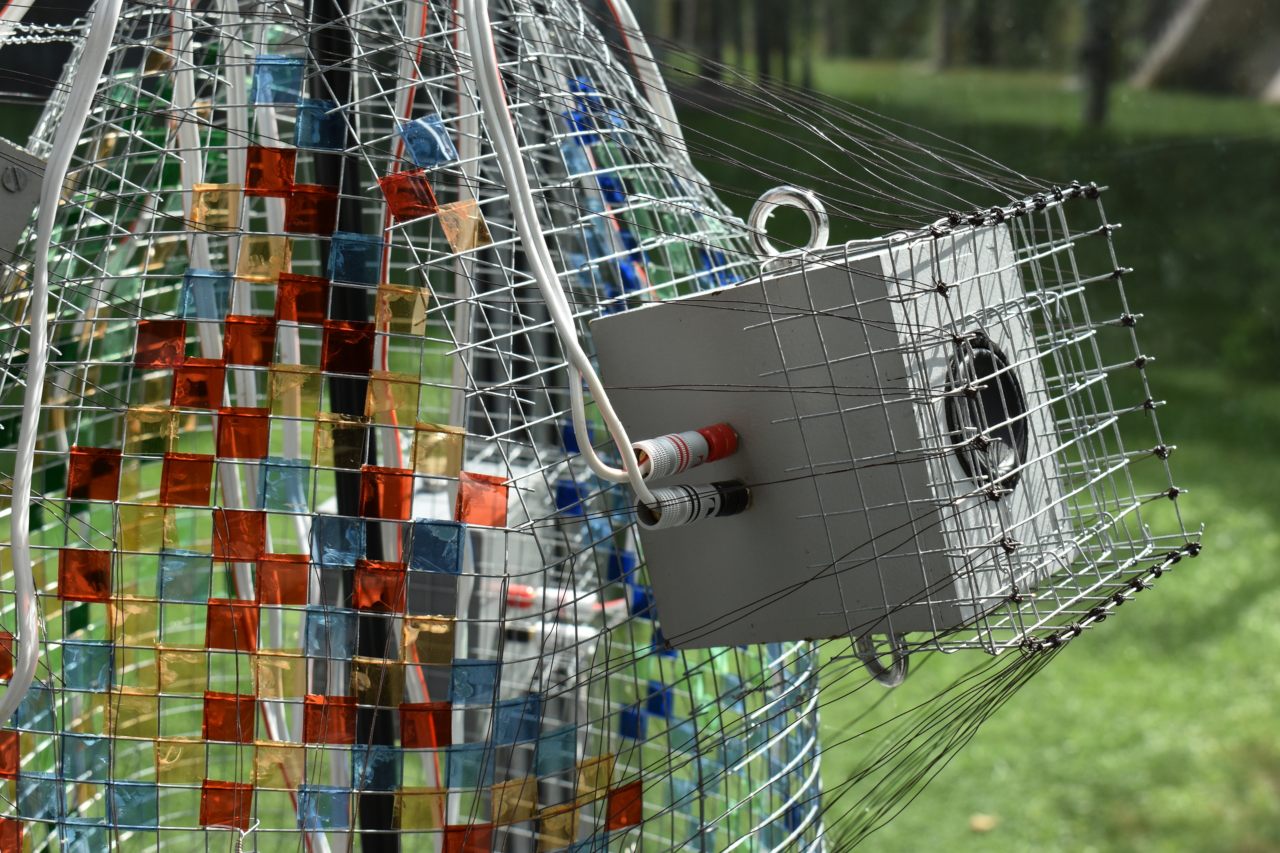
On the other side of the cubicle, a fainter sound can be heard. A mix of whispering voices emanates from Hanns Holger Rutz’s sound sculpture Medusa, an object that has found its perfect place in the acute angle at the end of the corridor. A work-in-progress piece, it beams us back, once again, to the rooftop of the Italian palazzo during the second interval. There, whispered poetic texts about dreams, light, or personal processes where collected from the artists-researchers. At Steinhaus, the whispers move around the sculptural object, interleaved with more abstract electroacoustic sounds. The object is shaped from a wire grid, adorned with small speakers and a translucent mosaic.
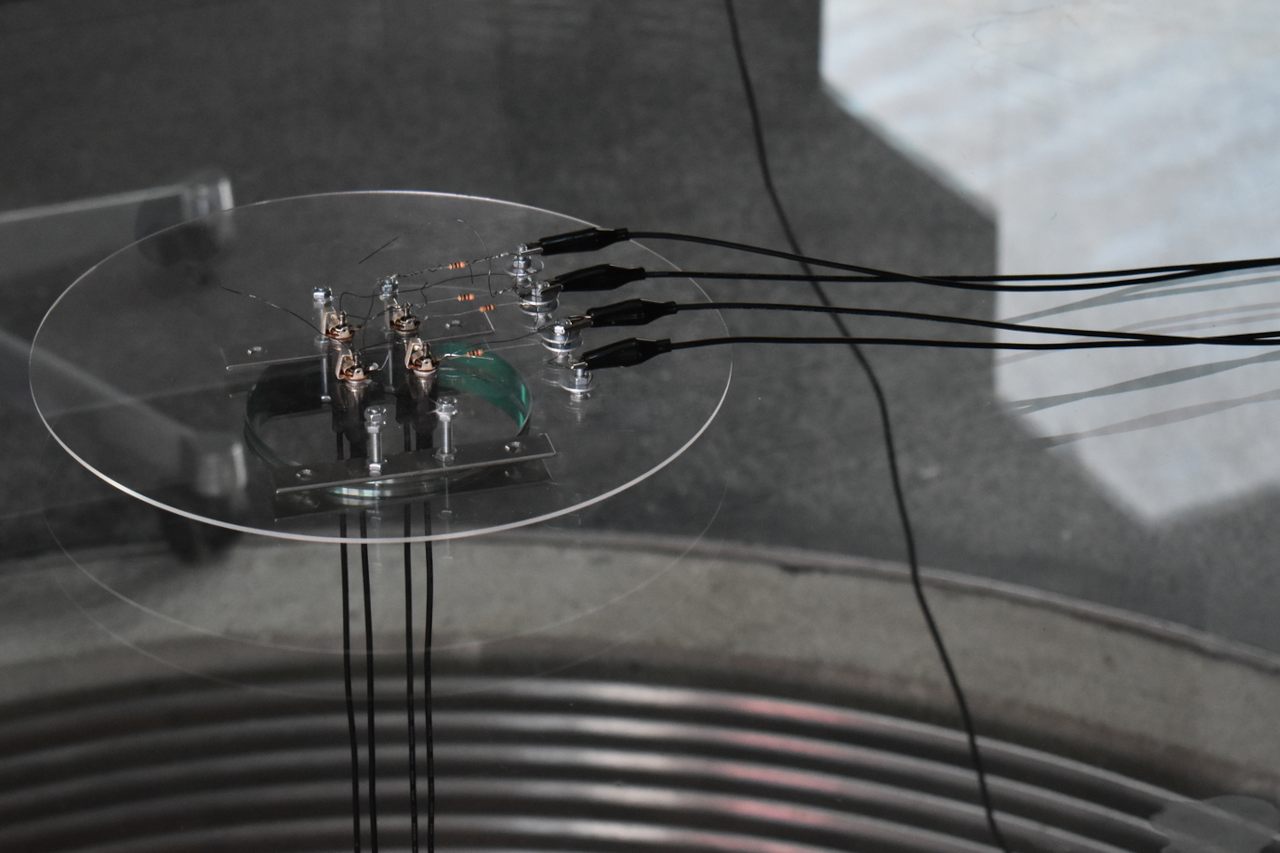
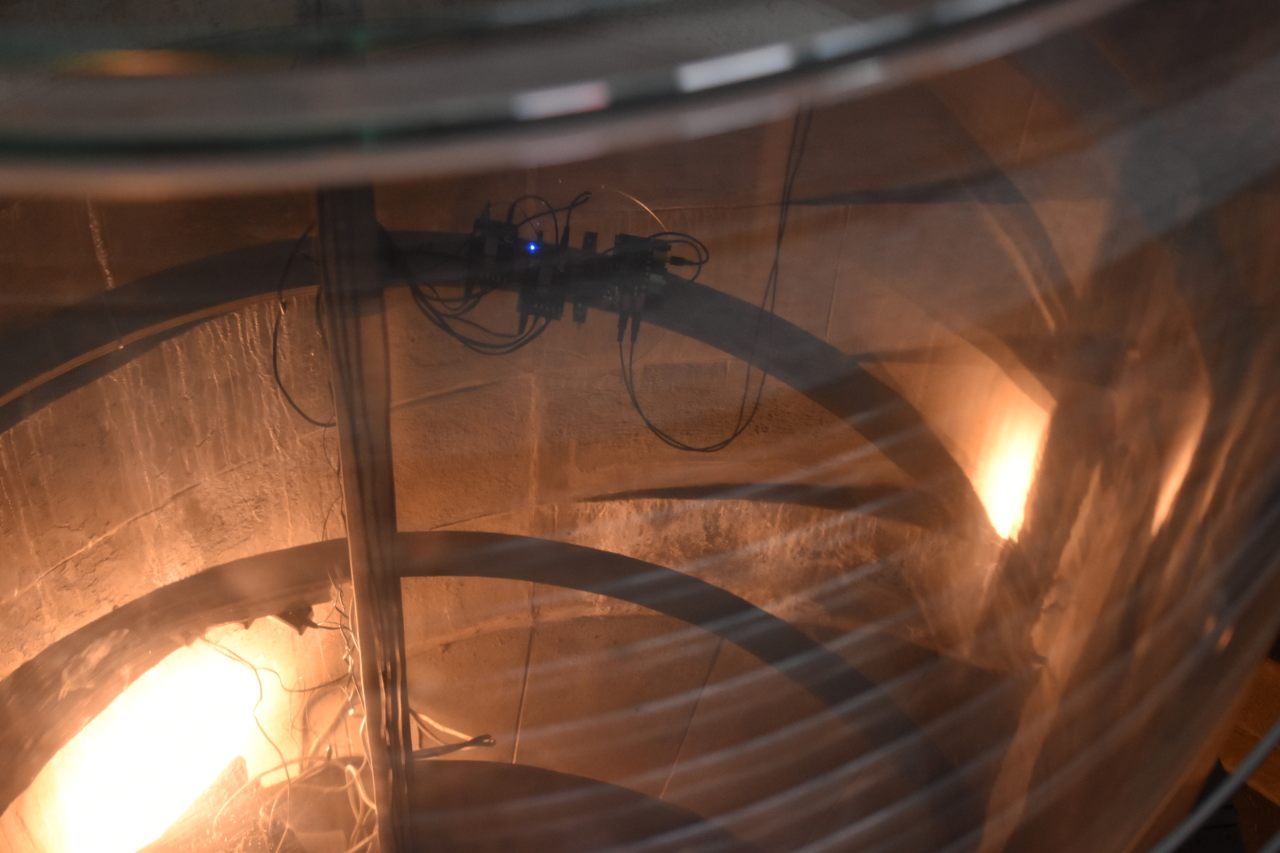
Turning back in the corridor, and finding the steps downwards from the ground floor, another sound piece occupies the central axis of the building. The spiral room that hosts Daniele Pozzi’s feedback-driven installation Wassersäule is built around a cylinder made of thick acrylic glass that connects directly to the aquifer beside the house. The cylinder is set below the groundwater level so that, when a valve is opened, water flows in. Due to a recent flood, the valve is now mostly kept closed and the cylinder remains empty. In the absence of water, the cylinder is a lucid resonant body, pierced only by a small aperture at its upper end. Four small microphones were lowered through the aperture on top, letting them reach the space. Connected to the surrounding glass and metal structure, the echoes within can drift outward.
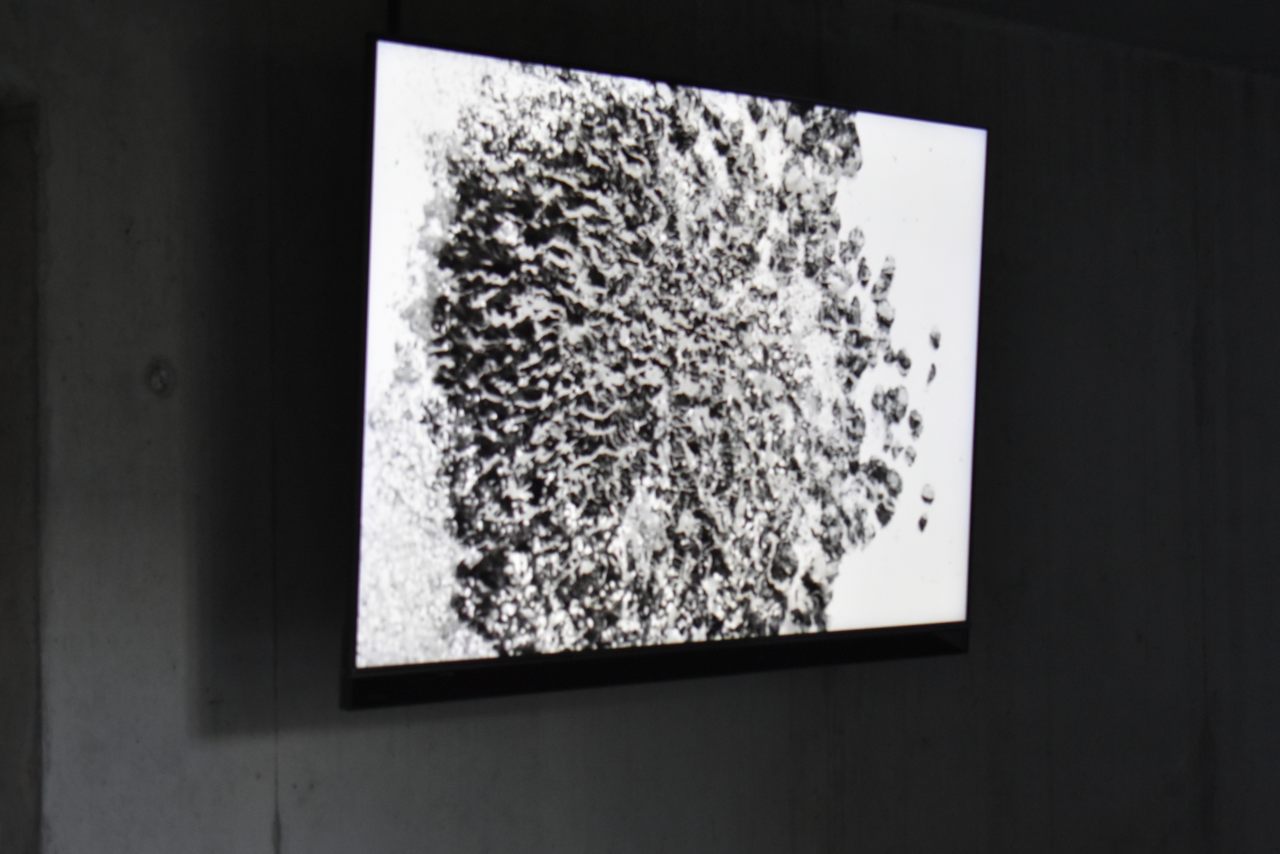
Not far from here, in the ‘cinema’, Elena Redaelli’s video piece #Crystallization_Encounters can be seen and heard. Drifting across a dense surface of curled, crusty growths, it resembles a miniature, otherworldly landscape. We are invited on a journey through lichens with granular deposits and dusty areas, revealing a hidden world beneath. The textures expand into landscapes of stone and minerals where symbiotic relationships thrive. Lichens crystallize time, care, and exchange, becoming monuments to a collective future. Their forms symbolize shared vulnerability and imagination, where agency arises from proximity and exchange. By lingering with lichens, we embrace fragility and collective becoming, echoing simularr’s porous ways of arriving.
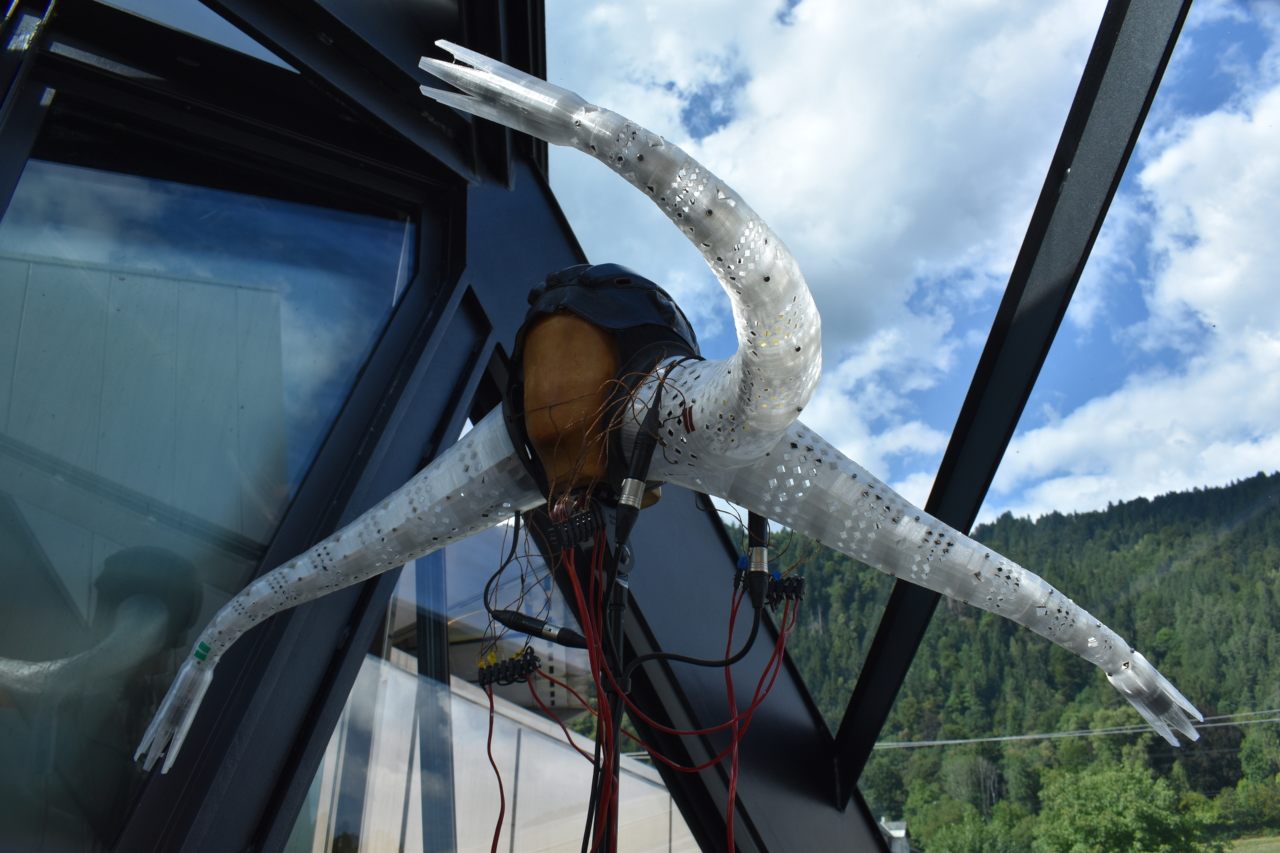
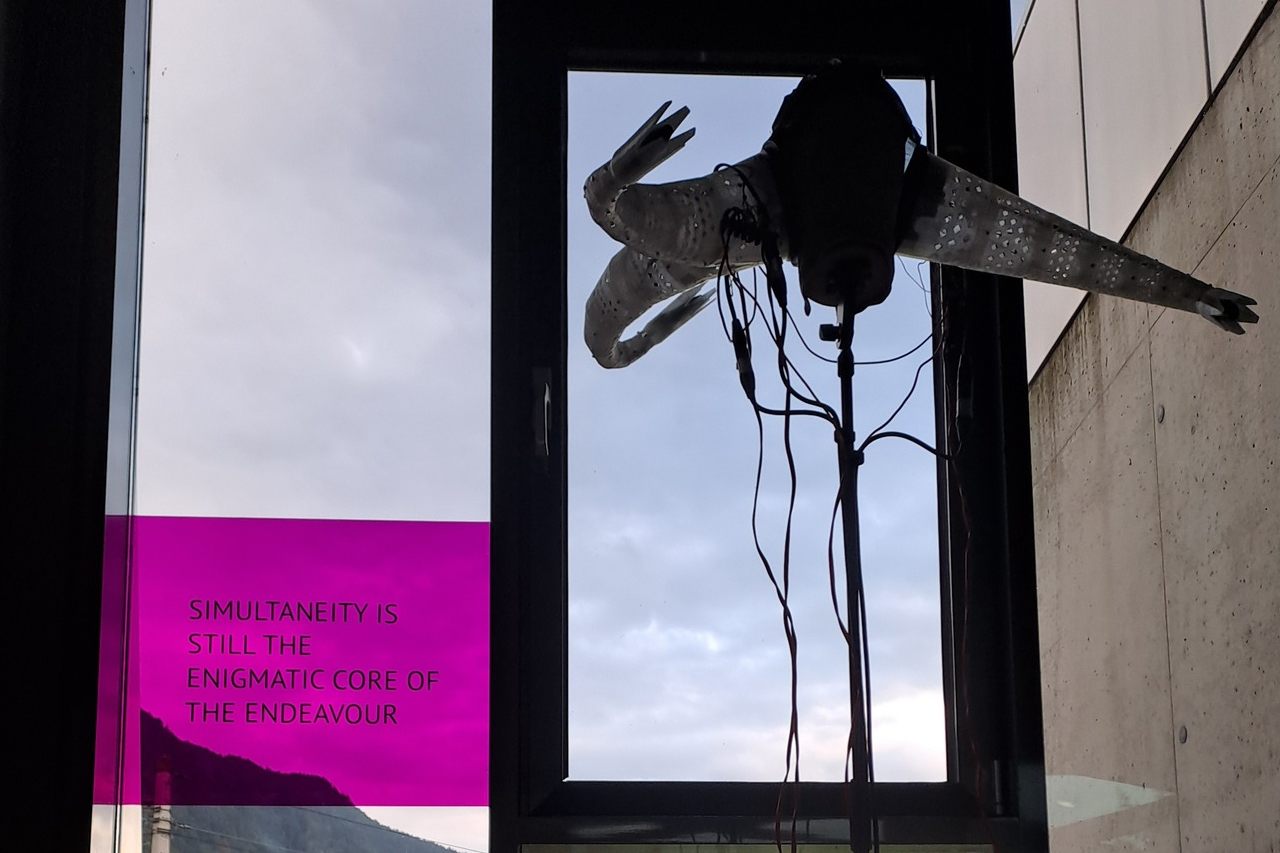
We have reached another turning point in the building. It’s time to return to the foyer and take the steps to the first floor. Left and right of the landing, two sculptural interventions with antler-like structures sitting on wooden heads greet us. They are the Enantiomorphs, communicating with each other sonically through the ether. A shape is enantiomorphic if it cannot be congruent with its mirror image. Many human organs, like hands and ears, exhibit this property. Initially conceived as a “wearable” that turns two participants into enantiomorphs of each other by exchanging auditory modalities, questioning perceptions of self and space, the sculptural display houses piezo speakers, operating at insectoid frequencies. Microphones capture sound from different perspectives, exchanging resonances between the two entities. The result is a series of chirp sounds, reminiscent of birds.
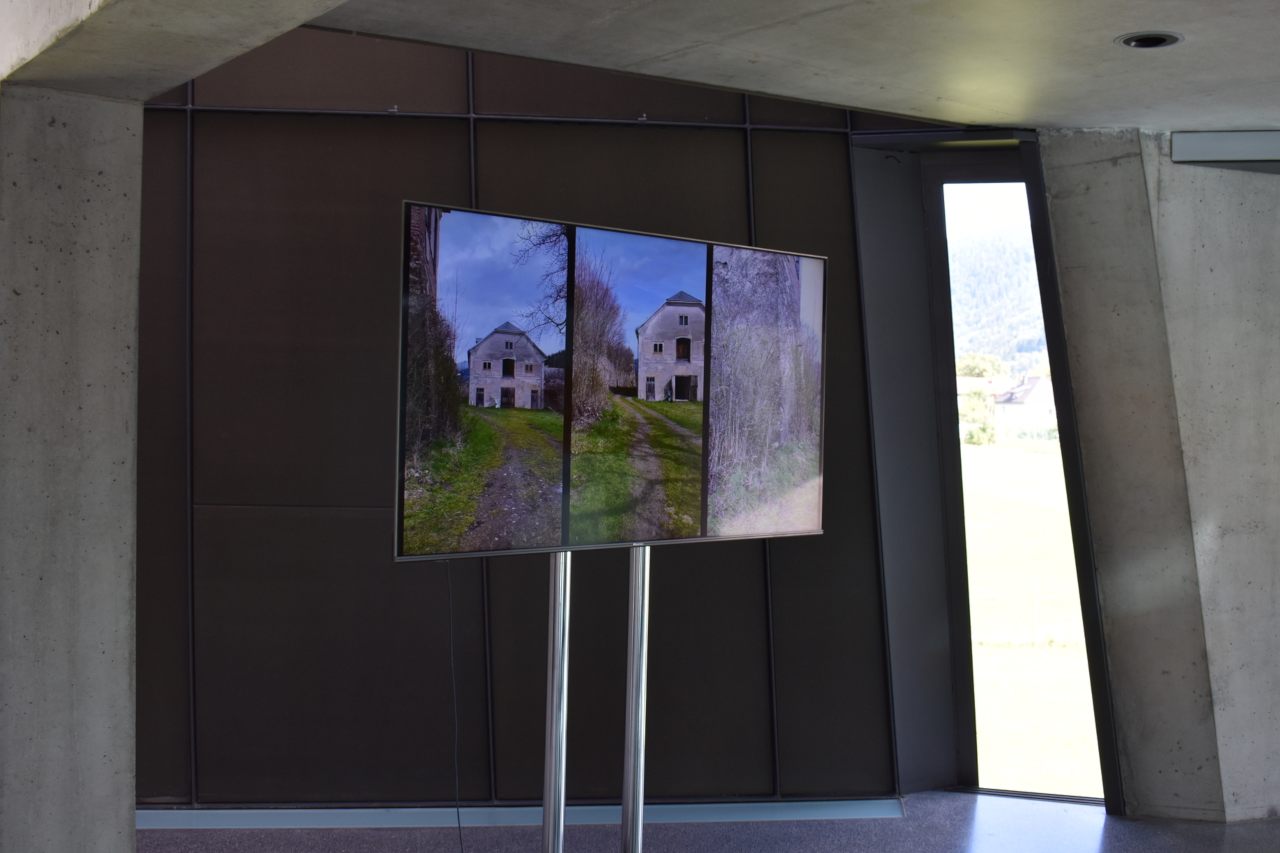
On the ‘East wing’, neighbouring one of the Enantiomorphs is Charlotta Ruth’s video piece Arrivarium. It uses excerpts from a daily walking practice developed during the first intervals’ intensive retreat at Schrattenberg, when each day Charlotta retraced her arrival path, filming how the space evolved. The several hours of material turned into a kind of field note in video form: a 3D notebook or Wimmelbuch (seek-and-find book) of accidental relations to the others. Multiple temporalities are composed side by side. Repeating the route shifted the perception, highlighting how routines influenced the relationship with the environment.

Walking to the other end of this wing, the ‘bedroom’ houses the two-channel video installation Five Villages in a Palazzo by Susanne Bosch. In April 2024, she captured life at Palazzo Russo in a series of multi-layered video works. For eight days and nights, a motion-activated wildlife camera—equipped with infrared LEDs for clear day and night shots—documented the dynamics on site. What if a village moved into a palace and integrated all living creatures: from cats and crows to swallows, husbands, partners, party guests, plants and lichens? Inspired by the idea of mutual “contamination”, the temporary community explored its coexistence with humans, animals and plants.
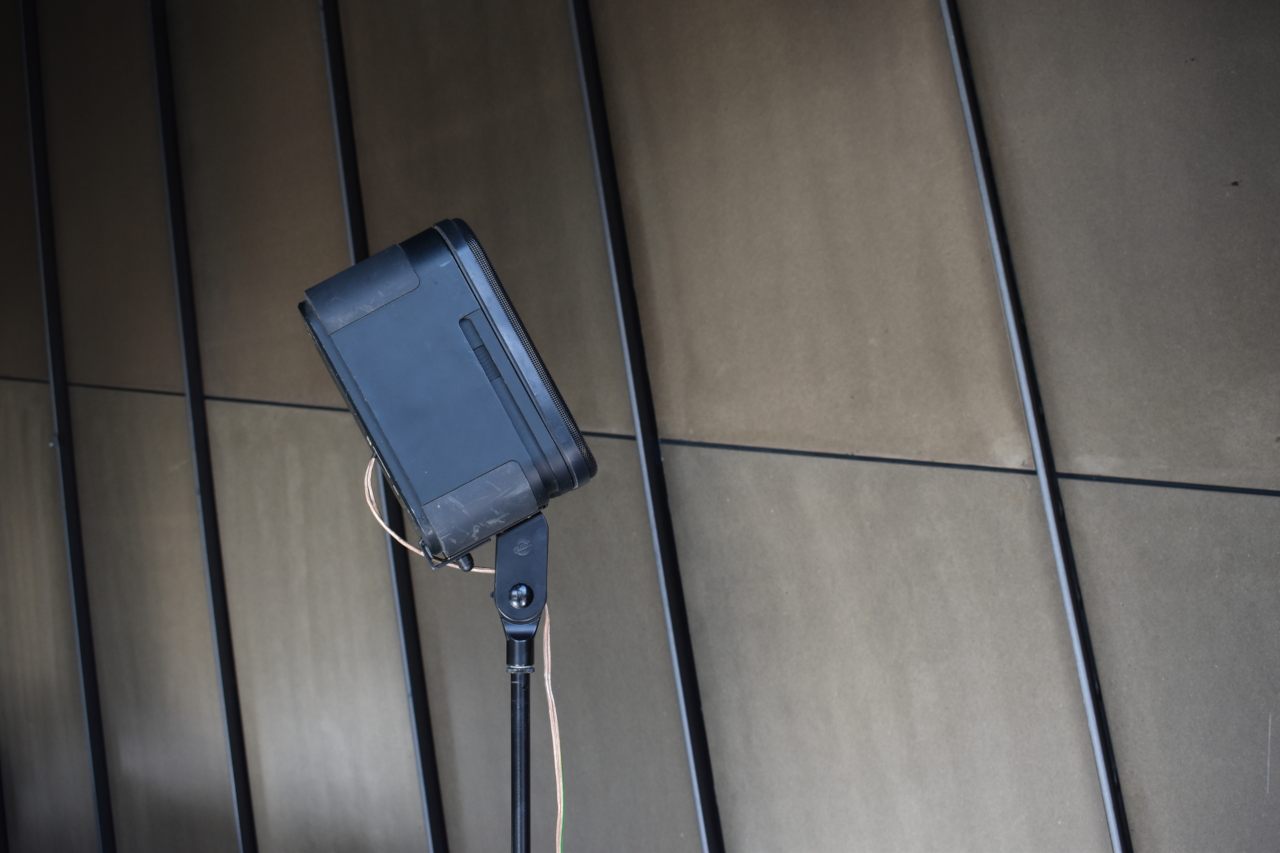
By now, one would have already been immersed in another soundscape that fills the building. Bird song draws the visitor to the East wing’s second floor, where a listening room was created for Fulya Uçanok’s electroacoustic piece Nearby the Blackbird. Fulya writes about her process: “Blackbirds are skittish birds, taking a few hops or steps then pausing, then again towards the next stop just like their singing that bursts into melodies with notable pauses in between. I love these virtuoso melodic bursts wrapped into unhurried delivery. Each phrase is a distinct production with a significant pause from the last, and no phrase immediately repeated … What is about these long pauses and fully formed bursts of action that happen in between? The (time-wise) compressed ebb and flow of pausing/acting, nothing/everything at once?”
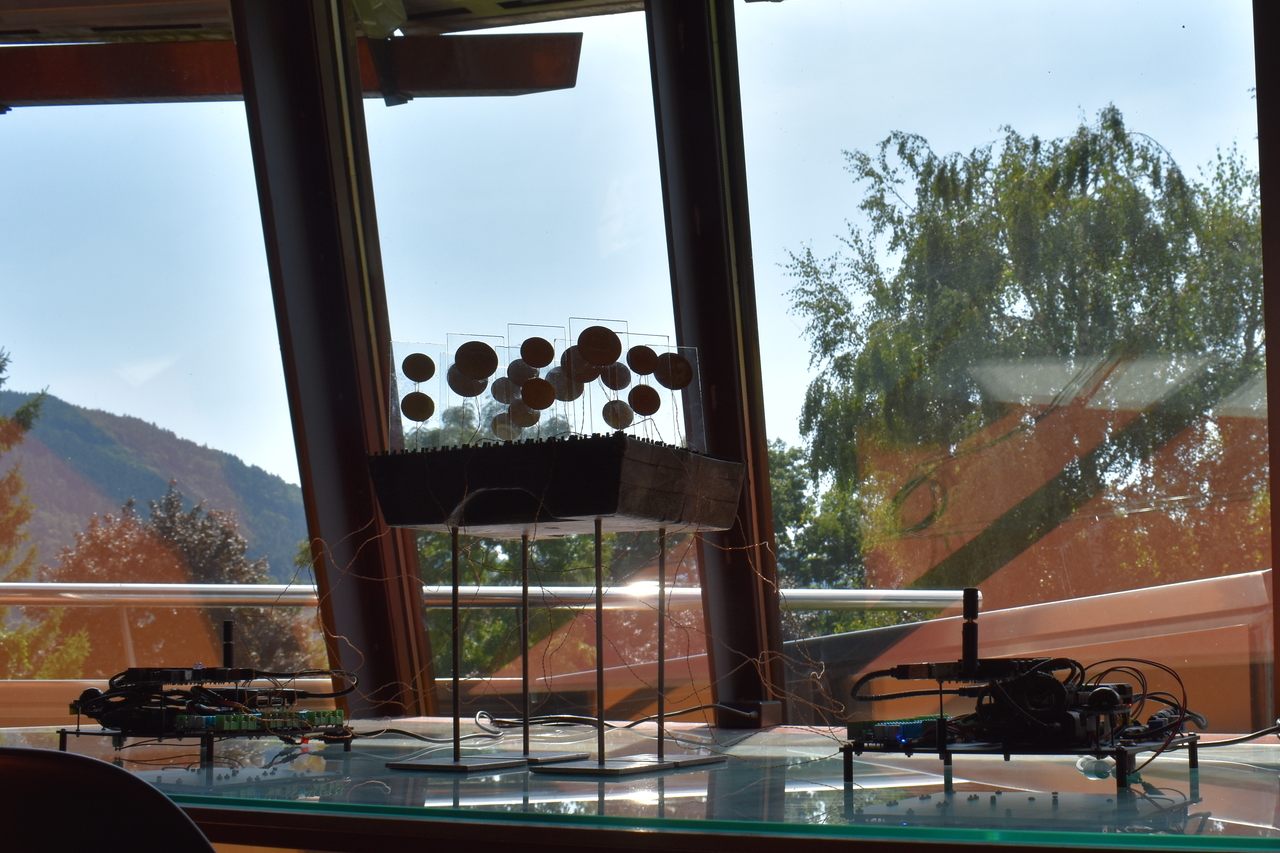

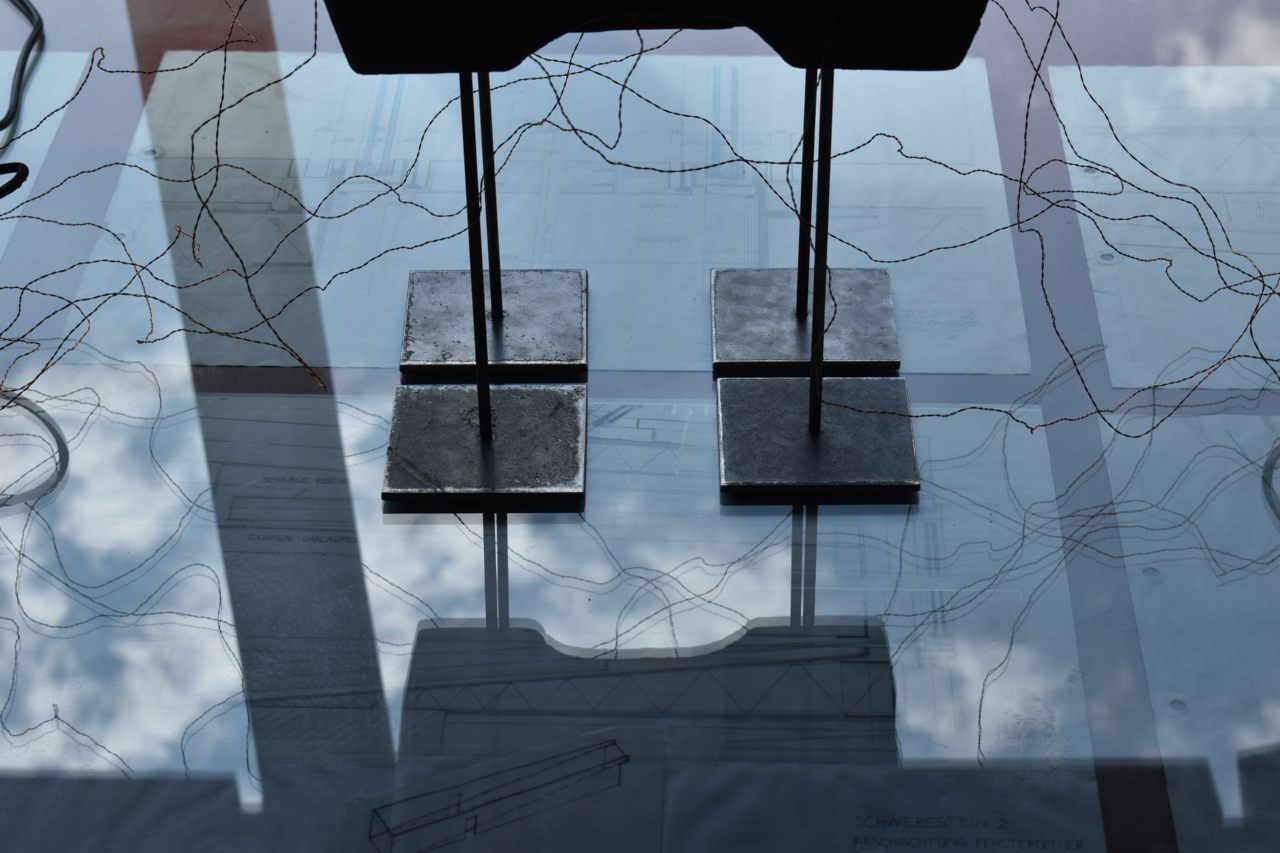
Moving across to the other wing of the building (the ‘Schwebesteine’), an instance of Hanns Holger’s Reticule installation series is found. A wooden ‘cliché’ (printing block) forms the base for the tabletop display. The term “reticule,” linked to “retina,” originates from the Latin rete, meaning a fine network, and refers to grids like cross-hairs in telescopic sights. In this work, small glass slides paired with piezo elements create subtle, insect-like sounds. The reticules, adaptable and open-ended, became a “field kit” during simularr and were originally arranged around the Hoke Werkhaus garden, interacting with water, leaves, bricks, and sounds from other artists. At Steinhaus, nodes placed on a table with interlaced glass create dynamic electroacoustic pieces, responding to each other and the environment. This composition invites close listening, forming a nuanced sound space as one moves their ears near the setup.
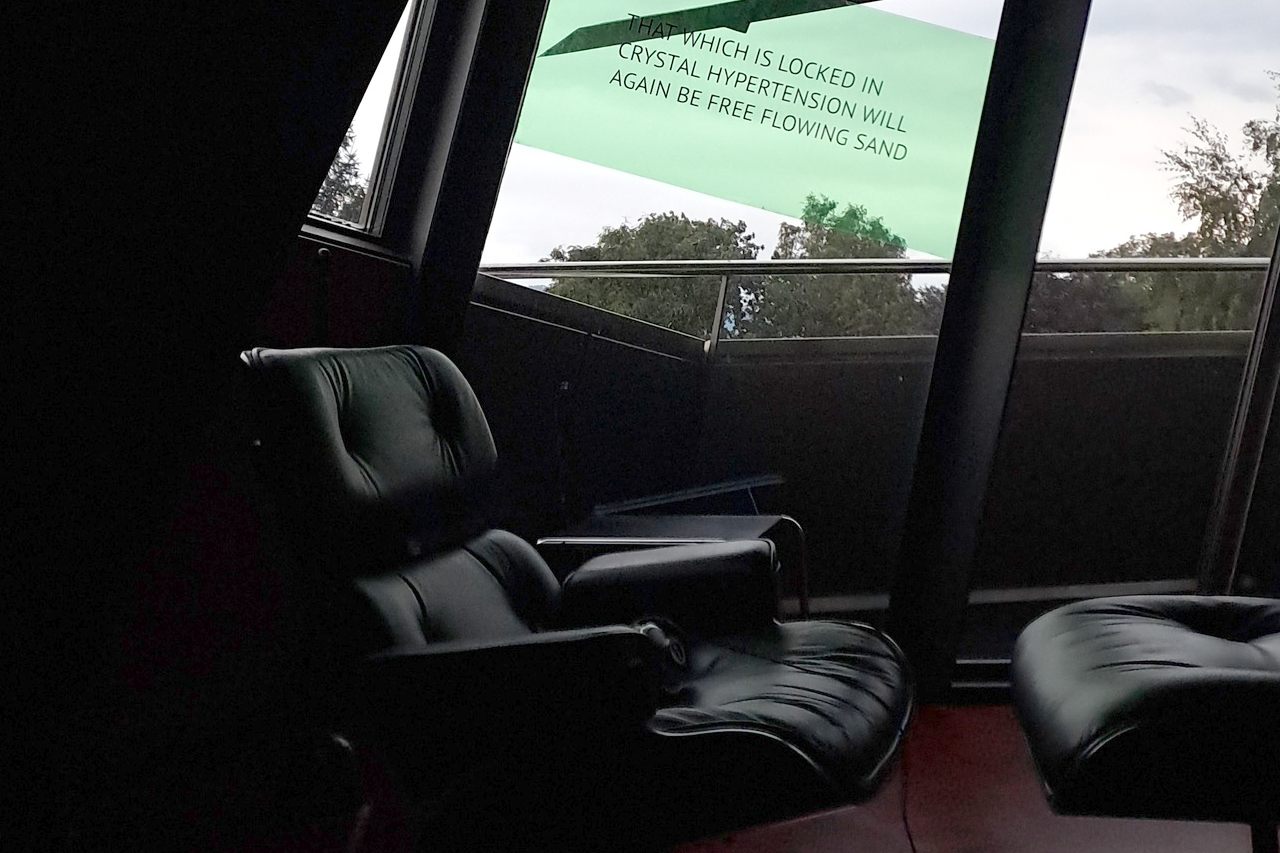
As one continues the metal stairs upwards, one enters the top-most and final space of the building, Domenig’s ‘office’. Leather chairs offer comfortable seating. One can grab a pair of headphones and listen to Ludvig Elblaus’ electronic composition Dancing Sand: “Imagine the inherent entropic desire of a material to return to its constituent components. Glass is the near frozen but still glacially slowly flowing form of materials that one day, like all things, will revert to dust. An opaque desert will once again form out of all that has been made translucent. That which is locked in crystal hypertension will again be free flowing sand as the universe relentlessly marches in the direction of entropy.”
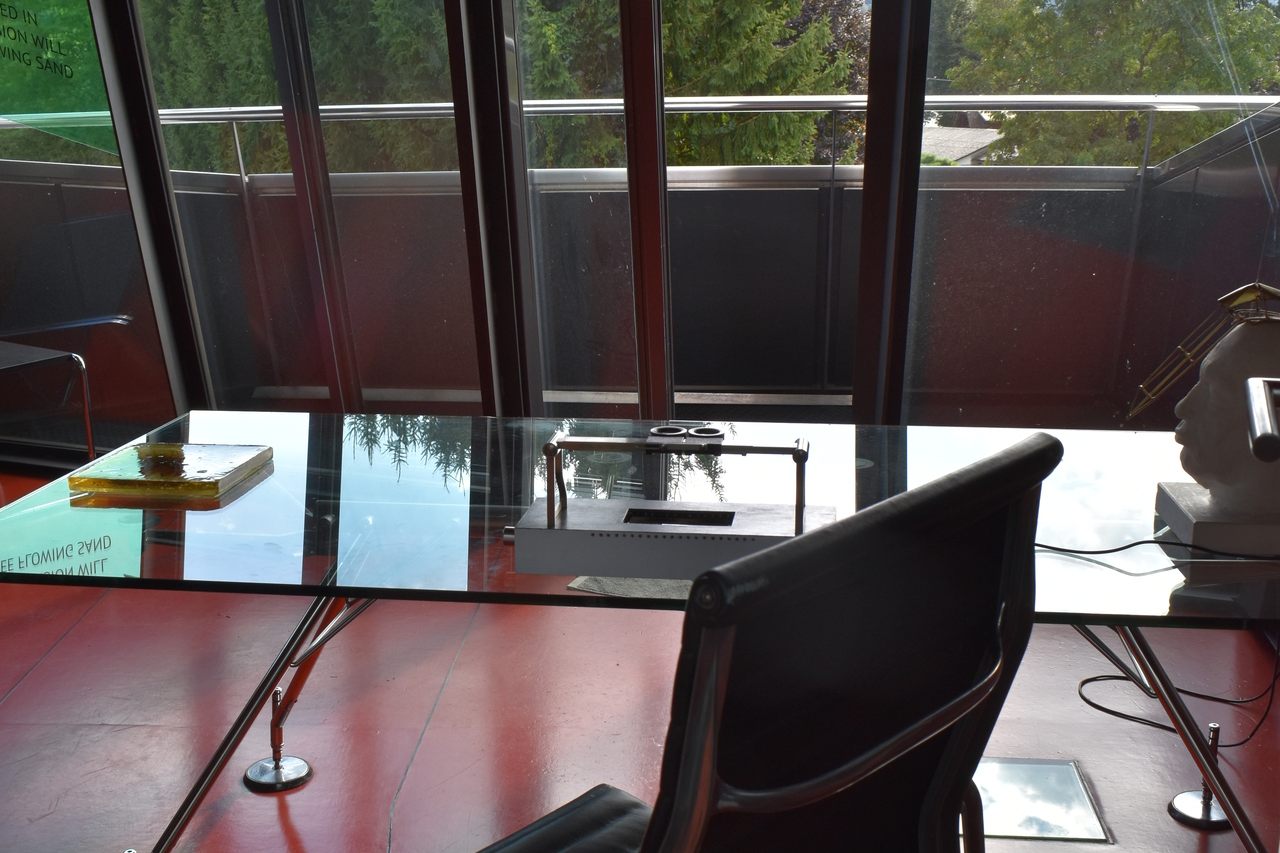
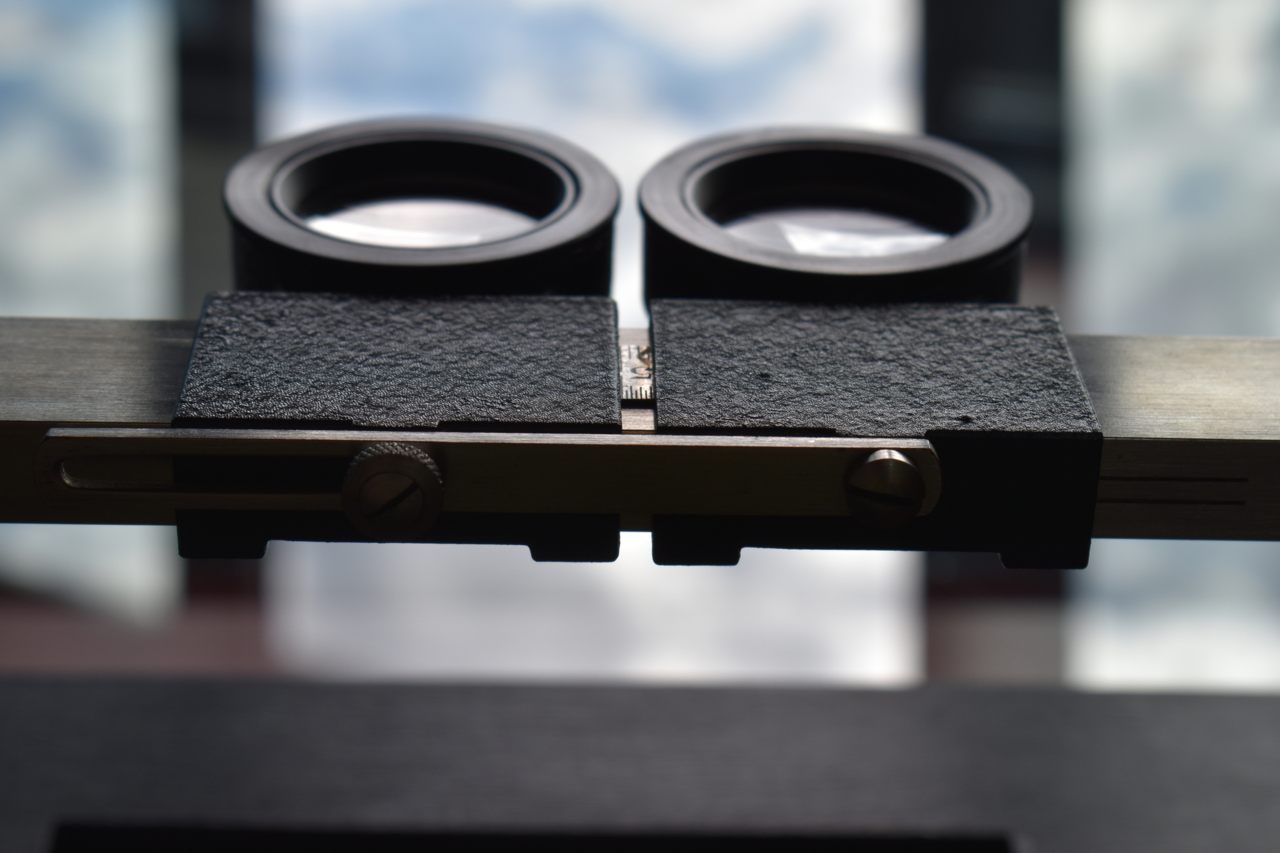
Another inconspicuous piece in this room ties the almost-end of simularr to its beginning. The tabletop piece Kontakt (simultan) was conceived as an experiment by Hanns Holger for the Reagenz art space, running there from 2021 to 2025. It involved a glass plate with lichen fragments, irrigated and photographed four times daily to capture slow growth, visible as a photographic time series. This process was once shared online via a social media bot. In the installation, visitors can overlay current and past states, with photos augmented by texts from reflections on simularr and contributions from an open call. Transforming the known stereoscopic imaging technique, here images are composed from the same position but at different times, highlighting changes over time in an experience of simultaneity. With the experiment now complete, the lichen plate is embalmed in epoxy resin and displayed on Günther Domenig’s office table, alongside the stereoscopic object.